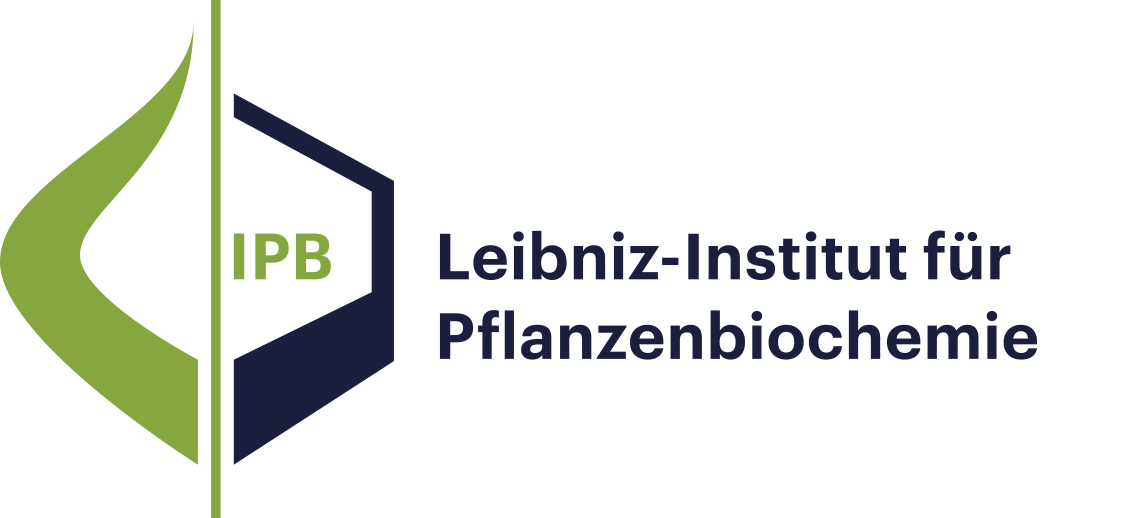- Ergebnisse als:
- Druckansicht
- Endnote (RIS)
- BibTeX
- Tabelle: CSV | HTML
Publikation
Publikation
Leitbild und Forschungsprofil
Molekulare Signalverarbeitung
Natur- und Wirkstoffchemie
Biochemie pflanzlicher Interaktionen
Stoffwechsel- und Zellbiologie
Unabhängige Nachwuchsgruppen
Program Center MetaCom
Publikationen
Gute Wissenschaftliche Praxis
Forschungsförderung
Netzwerke und Verbundprojekte
Symposien und Kolloquien
Alumni-Forschungsgruppen
Publikationen
Publikation
Phenylphenalenones represent a typical group of secondary metabolites of the Haemodoraceae. Some of these phenolic compounds show organ-specific distribution within the plant. However, detailed information on cellular localisation is still lacking. To this end, confocal laser-scanning microscopy, microspectral photometry and high-performance liquid chromatography were used to study the tissue localisation of phenylphenalenone-type compounds in Xiphidium caeruleum Aubl. From the autofluorescence potential of these compounds, specific distribution of allophanylglucosides and non-glucosidic compounds of the phenylphenalenone-type in distinct cells of the roots (apical meristem, cortex, cap, epidermis) and the shoot system was revealed. Fluorescence enhancement using "Naturstoff reagent A" (NA) indicated the occurrence of NA-positive natural products in the vacuoles of leaf epidermal cells. The present results provide new insights into the possible functions of phenylphenalenone-related compounds in the context of their localisation. Additionally, the advantages and limitations of the techniques are discussed.
Publikation
Chalcone (CHS), stilbene (STS) synthases, and related proteins are key enzymes in the biosynthesis of many secondary plant products. Precursor feeding studies and mechanistic rationalization suggest that stilbenecarboxylates might also be synthesized by plant type III polyketide synthases; however, the enzyme activity leading to retention of the carboxyl moiety in a stilbene backbone has not yet been demonstrated. Hydrangea macrophylla L. (Garden Hortensia) contains stilbenecarboxylates (hydrangeic acid and lunularic acid) that are derived from 4-coumaroyl and dihydro-4-coumaroyl starter residues, respectively. We used homology-based techniques to clone CHS-related sequences, and the enzyme functions were investigated with recombinant proteins. Sequences for two proteins were obtained. One was identified as CHS. The other shared 65–70% identity with CHSs and other family members. The purified recombinant protein had stilbenecarboxylate synthase (STCS) activity with dihydro-4-coumaroyl-CoA, but not with 4-coumaroyl-CoA or other substrates. We propose that the enzyme is involved in the biosynthesis of lunularic acid. It is the first example of a STS-type reaction that does not lose the terminal carboxyl group during the ring folding to the end product. Comparisons with CHS, STS, and a pyrone synthase showed that it is the only enzyme exerting a tight control over decarboxylation reactions. The protein contains unusual residues in positions highly conserved in other CHS-related proteins, and mutagenesis studies suggest that they are important for the structure or/and the catalytic activity. The formation of the natural products in vivo requires a reducing step, and we discuss the possibility that the absence of a reductase in the in vitro reactions may be responsible for the failure to obtain stilbenecarboxylates from substrates like 4-coumaroyl-CoA.Hydrangea macrophylla (Garden Hortensia) encodes a type III polyketide synthase synthesizing the stilbenecarboxylate backbone which is the basis for the biosynthesis of many secondary products in liverworts and in higher plants.

